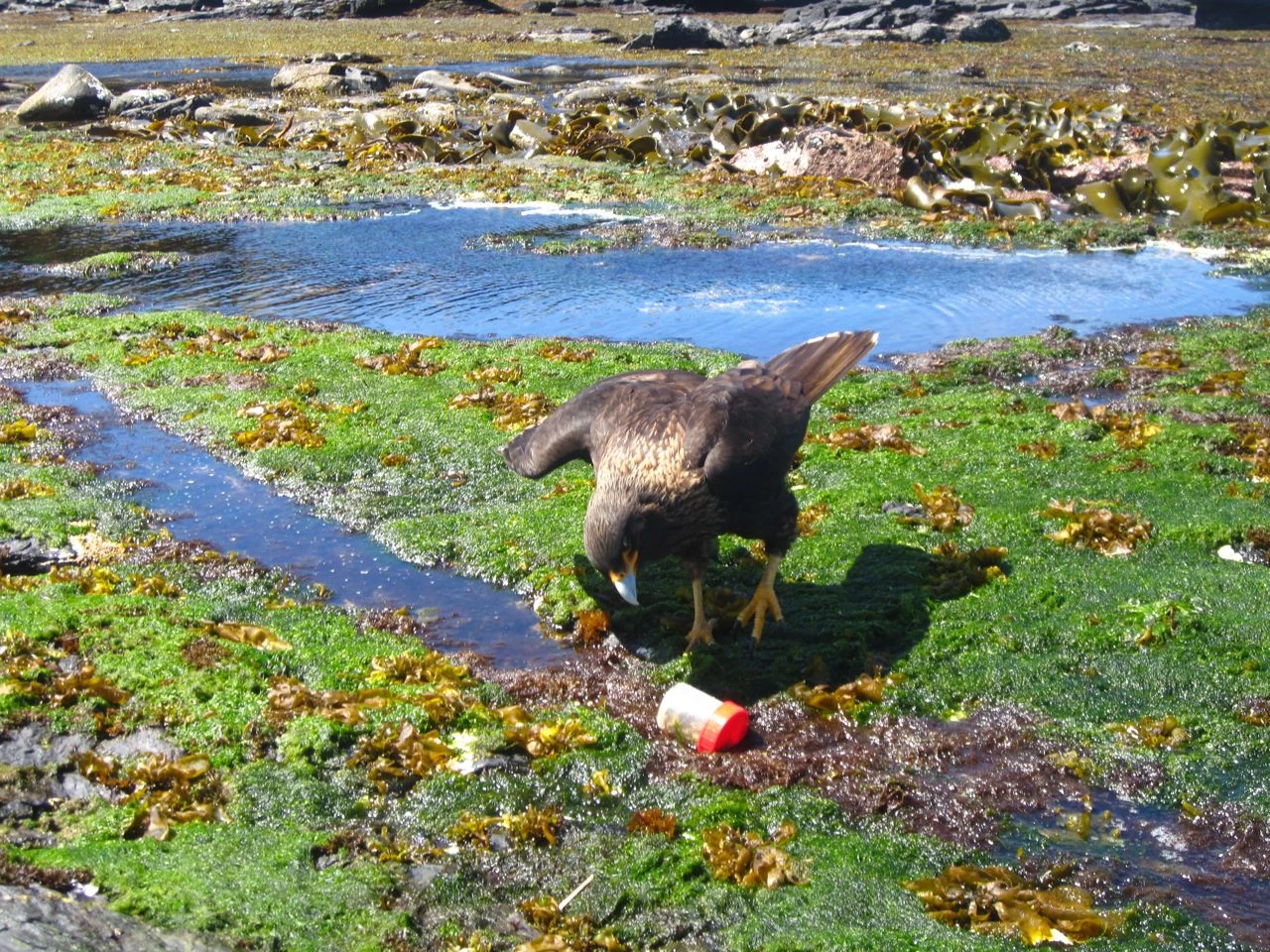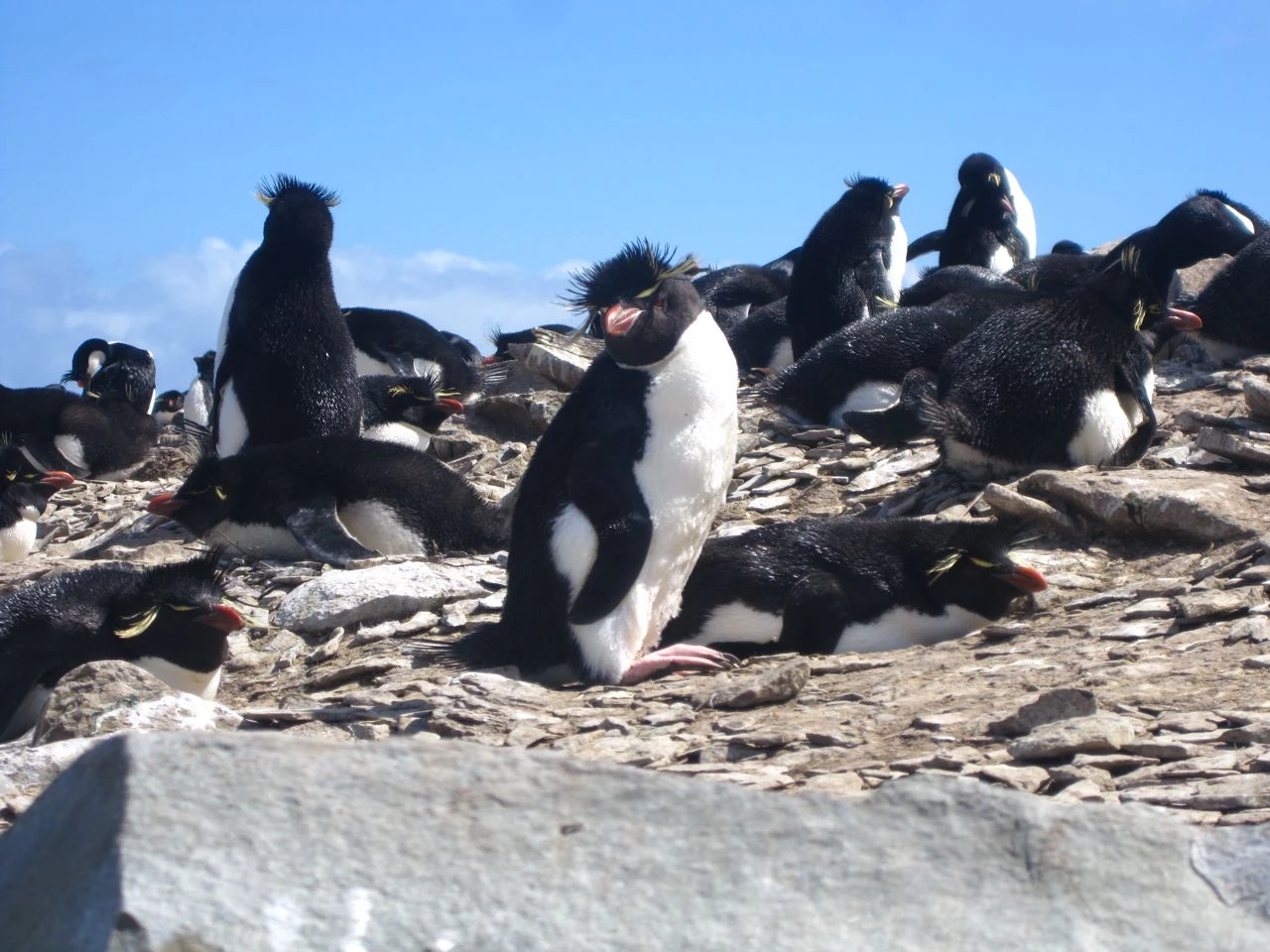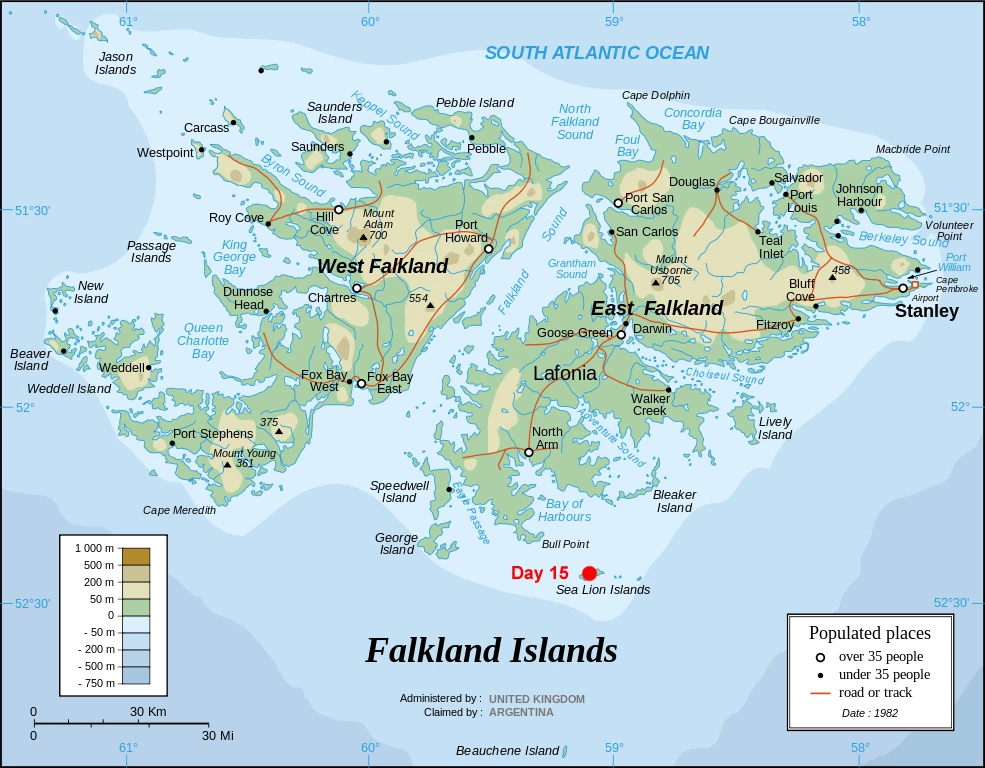Polychaete research in the Falklands by Teresa Darbyshire - seals, seals, seals
, 29 November 2011
Shore sampling can be risky. Tides, slippery rocks, remote places. We always fill in risk assessment forms before we do fieldwork and I duly filled mine in before heading out here. I must now put my hand up though and admit it was incomplete, I had left off some risks. In my defence though, elephant seals sidling up behind you and birds of prey flying off with your samples are not risks that most people would have thought of.
I flew out to Sealion Island this morning. A small island that is the southernmost island of the Falkland Islands group and notable for its breeding colony of Elephant Seals. It is part free time and part still sampling where possible. After the short flight in the little 8-seater plane (photo 1), I headed straight down to the beach to watch the enormous bull Elephant Seal (photo 2) lolloping along like a huge rippling slug with all the pups around laid out ready for a bit of sunbathing. From there I wandered down along the rocky shoreline keeping an eye out for potential dive sites (definitely not for orcas or more seals). Coming across a flat expanse of rock still just under water I was interested to see it was very slate-like with lots of potential layers to lever up to look for worms. This was great as I hadn’t seen any rock like this up to now as most of the islands are fairly solid granite. I had forgotten my dive knife which would have made a good chisel but my penknife didn’t do a bad job and I was soon picking out worms from the crevices. As I worked I heard a strange splashing sound, looked up but didn’t notice anything. As it happened again a short time later I again looked up to see one of the Elephant Seal pups I had earlier walked around to get on to the ledges had moved along towards me. I looked at it, it looked back and didn’t move. I carried on, more splashing, I looked up. The seal was closer and another had also appeared. I carried on. Splash, splash, splash. Looked up, they were a bit closer. This carried on for a bit until their courage ran out and they kept their distance to the relief of all. I moved on.
Down to another shore and a bit more scraping and collecting. This time I look up and what I think was a Striated Caracara landed only a couple of metres away and looked at me. I had already seen one of these twice, also close up and was beginning to feel followed. It hopped closer, surely not normal behaviour for such birds. The Striated Caracara, according to the island’s leaflet is one of the rarest birds of prey in the world. This rare bird then hopped over to the sampling pot near my bag, curled its talons round it and flew off (photo 3) as I watched in disbelief. It landed higher up the shore where a friendly goose then attacked it until it abandoned the pot and flew off again. Very surreal. I retrieved my worms and left.
The rest of the day involved more penguins, including rockhoppers (photo 4) which I hadn’t seen before, lots more birds and more seals.
Tomorrow will probably be much the same, hopefully without the wildlife trying to steal my precious samples!




